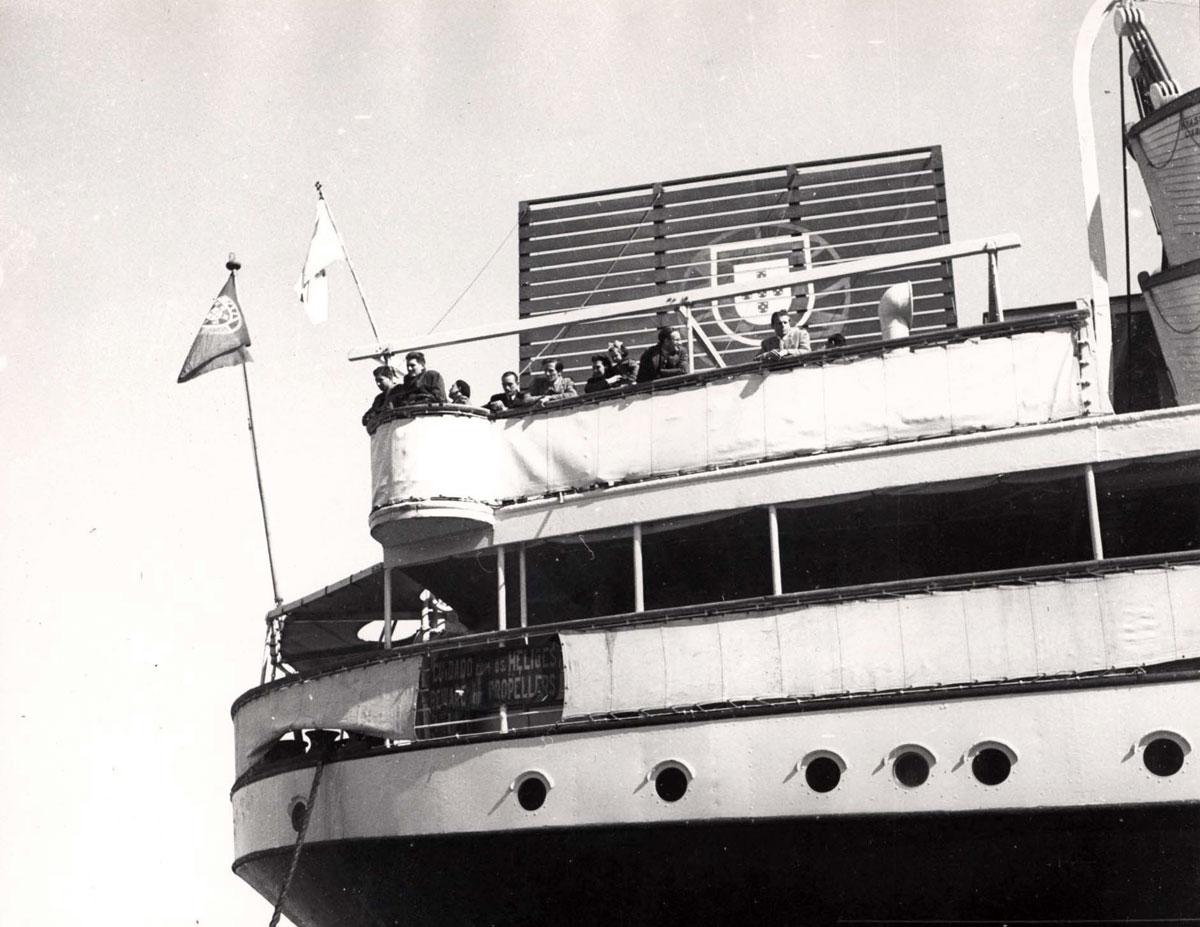A few hundred Jewish refugees reached Portugal during the war. Their entry to Portugal was only permitted after they had proven that they were in possession of permits to another country. Some 200 of them boarded the "Nyassa", which set sail from Portugal in January 1944. The ship passed Spain, where another 400 Jewish refugees came aboard. In February 1944, the "Nyassa" reached Haifa port, and the refugees arrived in Eretz Israel (Mandatory Palestine).
Even at the height of World War II, a limited number of Jewish immigrants were arriving in Eretz Israel legally, permitted entry by the British in accordance with the “White Paper”. The passengers on the "Nyassa" were apparently in this category. The third White Paper, published in May 1939, laid out, inter alia, British policy regarding Jewish immigration to Eretz Israel. The document stipulated that in the following five years, 50,000 Jews would be granted entry. Jews who were caught while attempting to immigrate illegally (“Ha'apalah”, “Aliyah Bet”) and were imprisoned in detention camps, were released only when it became possible to include them in the quota of entrance permits to Eretz Israel (“Certificates”) in accordance with White Paper regulations.
Before the Holocaust, not more than 1,000 Jews lived in Portugal. Salazar's dictatorship did not allow immigration of foreigners, due to economic difficulties and the fear of social tensions and the introduction of ideas that did not fall into line with the "National Spirit". Portugal wasn't even invited to the Evian Conference of July 1938, attended by representatives of 32 countries, who convened to discuss the question of absorbing Jews who sought to emigrate from Nazi Germany. Portugal was not a preferred immigration destination for Jews fleeing Nazi Germany and eastern Europe, not even as a transit country on the way to a final destination. Other western European countries, the USA and Eretz Israel were more attractive to Jewish emigres, both from an economic and professional perspective, and from a cultural point of view. Jewish refugees only started looking to Portugal after other countries rejected their requests for transit visas.
On 28 October 1938, the Portuguese government ruled that Jews were forbidden from settling in Portugal, but were not prevented from passing through in order to reach a different destination. Every Jew seeking to enter Portugal had to prove to the Portuguese authorities that he was in possession of a visa to another country.
Despite the declared policy of the Portuguese government, sometimes Portuguese consuls in other European countries did give residence permits to Jews who were attempting to emigrate from central and eastern Europe, and to wealthy Jews who could prove that they owned enough capital to support themselves and even boost the Portuguese economy.
The Spanish Civil War made entry for migrants and refugees more difficult: an extremist faction within Franco's government in Spain sought to annex territories from Portugal in order to create a "Greater Spain", and in response, Portugal increased vigilance on its borders. Salazar established the PVDE, a police force to supervise the borders. These policemen did not always honor the permits presented by the Jews, and sometimes denied access to Jews with official permits. This approach was relaxed in light of the support that Jewish organizations provided for the immigrants, particularly the HICEM organization, which undertook the responsibility for the welfare of many Jews in Portugal until their emigration, so that they would not be seen as a drain on the country's resources. In this way, thousands of Jews immigrated to Portugal after the Nazi occupation of France in June 1940.
Peretz Leshem (Fritz Lichtenstein) of the Histadrut Hatzionit, and HICEM and JDC activists helped to organize the lease of the "Nyassa", the sailing license and the boarding of some 200 Jews from Portugal. Most of the Jewish passengers were refugees. At the same time, activists in Jewish organizations tried to explore other emigration methods, and even wondered if they could use the British freighters anchored in Gibraltar to bring Jewish refugees from Portugal to the Middle East.
The 10,000 ton "Nyassa" was built in 1906 by a German company, and became the property of the Portuguese government during World War I. In 1925 the ship was purchased by a private entity. In January 1944, weeks before the scheduled departure of the "Nyassa", not all the Certificates for the proposed immigrants had arrived from the British Mandate. Some 700 Jews were destined to immigrate to Eretz Israel, but 120 Certificates were still missing. Peretz Leshem sent telegrams, applied to people of influence, and even obtained an interview with the British Ambassador in Madrid. His attempts were successful, and the Certificates arrived.
The "Nyassa" left Portugal in late January 1944, carrying some 200 Jewish Holocaust refugees. Another 400 Jewish refugees boarded at Cadiz port in southern Spain. In total, there were approximately 750 immigrants on board. After about a week, at the beginning of February 1944, the "Nyassa" reached Haifa port, where this photograph was taken. The blue and white flag is clearly visible alongside the Portuguese flag.
Yad Vashem Photo Archives, 156FO3







